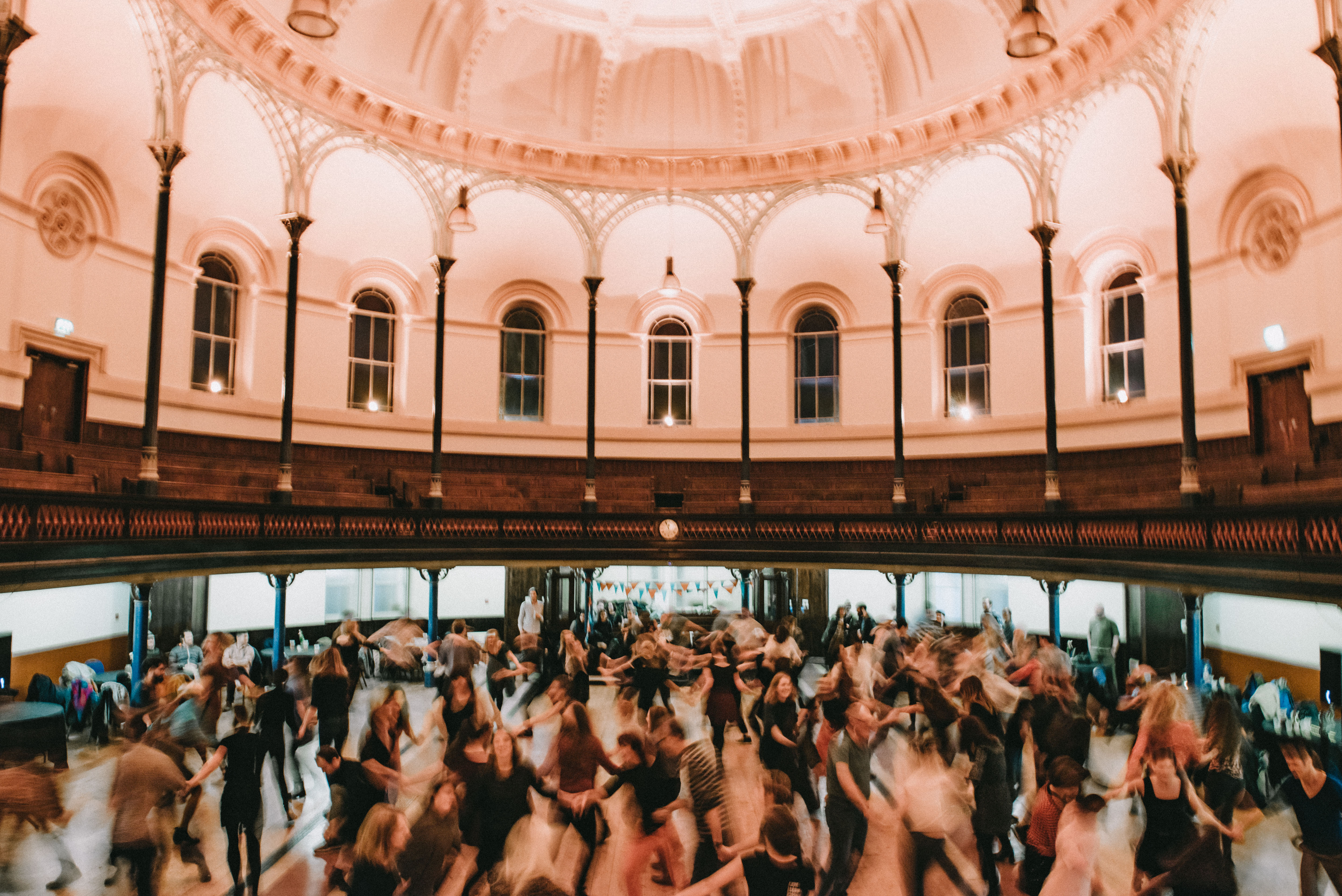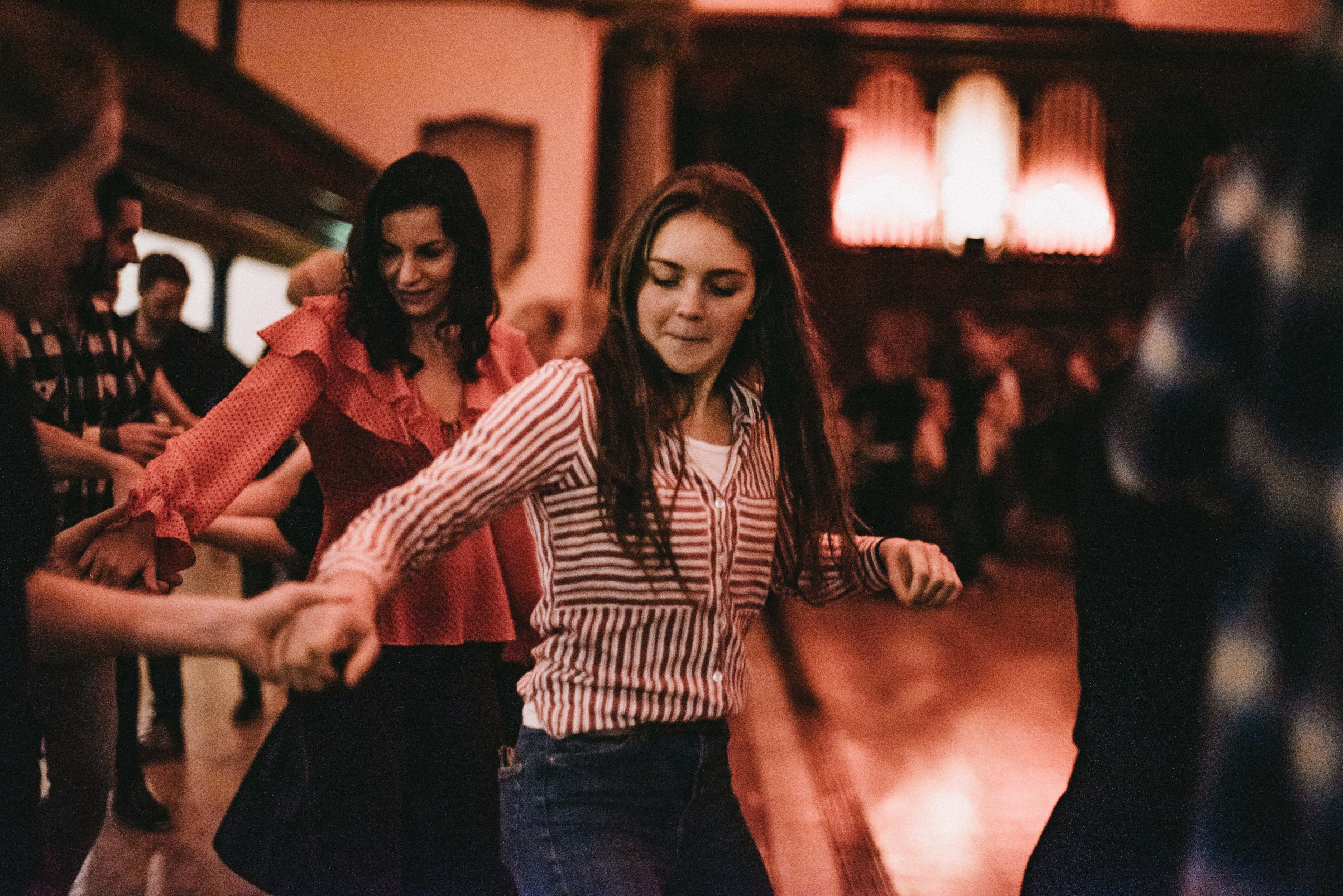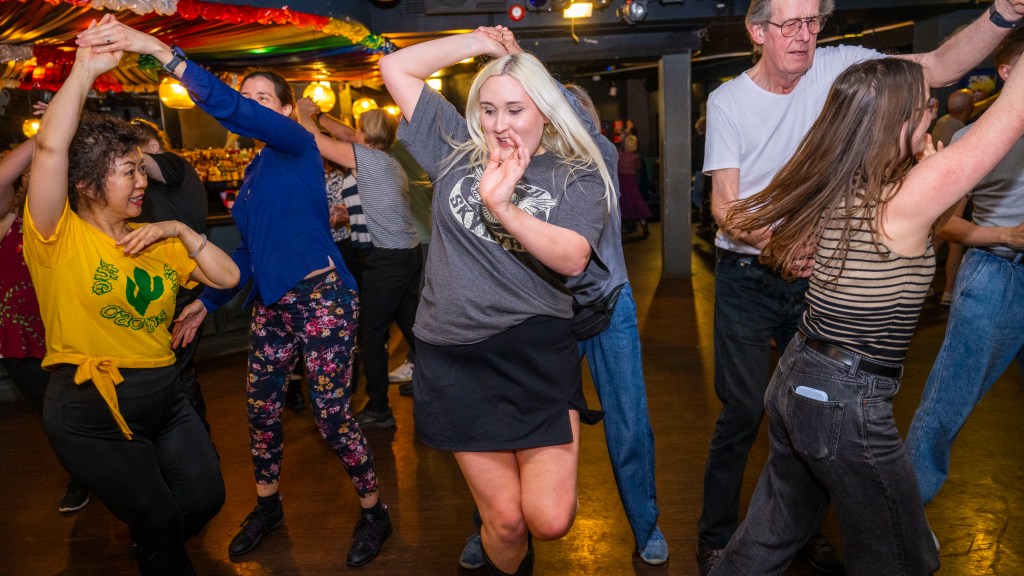Barn Dance Phenomenon: Gen Z’s Solution to Loneliness
On a lively Saturday night in Hackney, east London, a vibrant gathering of young adults fills a dimly lit venue with energy and rhythm. They engage in enthusiastic partner swaps, their joyful cries barely perceived over the loud music resonating in the air.
This bustling space is not a club in the early hours; rather, it is the start of the monthly barn dance at the Round Chapel, a stunning grade II* listed site where attendees kick, clap, and dance with abandon.
“It’s honestly like a drug,” exclaims Lizzy Faulkner, 25, an NHS doctor, who admits this is her seventh time attending. “It just keeps getting better — it’s like my monthly dose of serotonin.”
Lizzy is among a wave of individuals in their twenties and thirties seeking out the fun and connection that barn dances provide. Over the past year, a surge of barn dance-inspired events such as themed nights, classes, and social gatherings has emerged across London, reflecting a revival particularly embraced by Gen Z.
While the imagery of cowboy hats and bales of hay may come to mind, barn dances are not just American traditions or limited to country music. They are often synonymous with ceilidhs, both defined as sociable dance gatherings featuring partner rotation and circular patterns, guided by a caller who directs participants seamlessly through the moves, fostering accessibility for all.
The monthly barn dances at the Round Chapel, organized by the musical collective Cut a Shine, have seen an incredible increase in popularity, with tickets selling out weeks ahead.

Due to the overwhelming demand, the organization has expanded to host multiple dances over single weekends. For instance, during Burns Night weekend in January, they organized four events, selling a total of 1,200 tickets, along with an additional 450 individuals on the waiting list.
“This season has gone a bit bonkers,” remarked Joe Buirski, 47, director and banjo player at Cut a Shine. “Our audience has shifted from a few friends to predominantly 25 to 35-year-olds.”
The group initially began hosting ceilidhs two decades ago to encourage early attendance at their parties. They soon realized attendees were primarily interested in the dancing rather than the later festivities, prompting them to establish a barn dance residency in Finsbury Park.
Buirski attributes the rising interest among younger crowds to the structured nature of barn dancing, which eliminates the awkwardness often felt in free-form movements typical at raves or parties. “Here, it doesn’t matter how you dance — everyone’s engaged in the same experience,” he explained.

Jo Bowis, the dance caller for Cut a Shine for 15 years, believes the appeal lies in the human connection these dances foster. “In a digital age where young people often lack physical touch in their lives, barn dances create opportunities for real-world interaction,” she noted.
A recent survey revealed that 61 percent of individuals aged 18 to 25 reported experiencing “profound loneliness.” It’s no surprise, then, that young people are drawn to dance halls, where hand-holding with strangers is socially accepted and even expected.
Partnering up might even lead to romantic connections. Connor Newall-Gray, 21, co-founder of the ceilidh society at Imperial University, recounted how he met his girlfriend, Rosie Green, at the society’s inaugural dance. “We had to choose a partner at the start, and I ended up with Rosie for most of the evening. I probably wouldn’t have met her otherwise,” he shared.
Newall-Gray, who was also president of the football society last year, noted that the ceilidh society attracted more members, drawing 148 sign-ups in its first year.
Initially, many participants shared similar names reflecting the dance’s Celtic heritage, yet the events have become progressively inclusive, welcoming attendees from diverse backgrounds.

For students, the notion of dancing without alcohol may seem uncommon. However, with 27 percent identifying as teetotal, barn dances are becoming a favored choice for alcohol-free fresher events and university socials.
The phenomenon in London reflects a national trend. Bowreed, a ceilidh band from Bristol, hosted 173 events last year, while the Ceilidh Tree performed roughly 200 times across various locations, from Cornwall to Northumberland.
A club night named Yeehaw has recorded over 60,000 ticket sales since its inception in January 2022, orchestrating 300 gatherings in 32 cities, including Newcastle and Leeds.
Additionally, there has been a surge in LGBTQ+ line-dancing clubs, such as the Cactus Club, which transforms the Two Brewers pub in Clapham into a Nashville-inspired venue every Tuesday night.
Founded by Peter Flockhart in 1993, the Cactus Club has witnessed significant growth in recent years, largely welcoming younger individuals in their twenties and thirties.
Flockhart notes that while line dancing can indeed take place in barn settings, the styles differ greatly. “It’s like comparing tap and ballet. Line dancing primarily focuses on the feet, whereas ceilidh involves more hand and arm movements,” he explained.
Although primarily designed for the LGBTQ+ community, Flockhart emphasizes that the club is inclusive for all. Participants need not arrive with partners, and dance pairings are designed to be gender-neutral.
When discussing the influx of Gen Z participants, he stated, “It seems young people are eager to engage in activities — we’re not introducing anything new.”
“The essence of social dancing has always existed, and it’s fantastic to see it gain renewed interest,” he added.




Post Comment